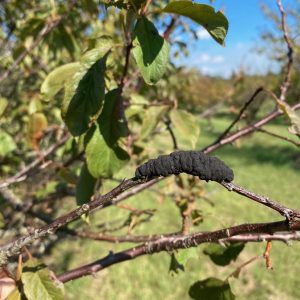
Alabama Extension is reminding its plum growers about the potential dangers of black knot disease, a fungal infection caused by Apiosporina morbosa.
David Lawrence, regional Extension agent in central Alabama, noted in an article on the Alabama Extension Commercial Horticulture Facebook page, that the disease primarily impacts plums, though it has the potential to infect other prunus species like cherry and peach.
Producers who are scouting for the disease should look for black, warty galls that form on branches and twigs, which have the potential to girdle and kill the affected limbs. The size of the galls can range from a half-inch to several inches long. Plum trees that have severe infections can become stunted and misshapen, leading to yield loss.
Black knot disease spreads through spores released from mature knots during wet spring conditions. The spores are transferred by wind and rain where they can infect trees on new growth or wounded parts of the tree. The infection is more likely to occur when temperatures are between 55 degrees Fahrenheit (F) and 77 F, with prolonged wet conditions that facilitate spore germination.
When to Identify
Moving forward, the best time to identify the galls is during the winter when trees have shed their leaves. This allows plum producers to examine each branch more easily. Growers should prune out any galls, cutting at least 6 to 8 inches below any visible infection. Infected plant material should be removed to reduce the inoculum in the field. This can be done by either burning or burying infected material.
Fungicides can also be effective, especially in combination with proper pruning and sanitation practices. They should be used preventatively as cover sprays during the period of active shoot growth. Products with chlorothalonil, captan and thiophanate-methyl have displayed activity against black knot.









